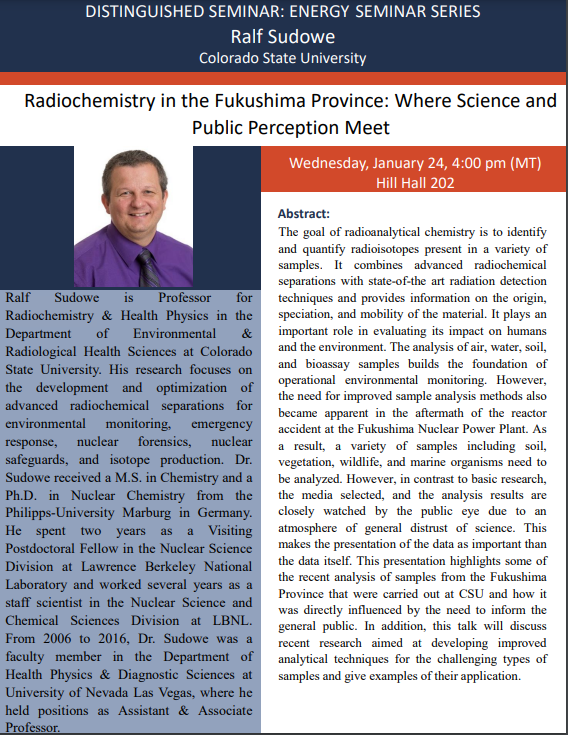
- This event has passed.
Energy Seminar Series – Ralf Sudowe 1/24 4:00pm HH202
January 24 @ 4:00 pm - 6:00 pm
Free
Radiochemistry in the Fukushima Province: Where Science and Public Perception Meet
The goal of radioanalytical chemistry is to identify and quantify radioisotopes present in a variety of samples. It combines advanced radiochemical separations with state-of-the art radiation detection techniques and provides information on the origin, speciation, and mobility of the material. It plays an important role in evaluating its impact on humans and the environment. The analysis of air, water, soil, and bioassay samples builds the foundation of operational environmental monitoring. However, the need for improved sample analysis methods also became apparent in the aftermath of the reactor accident at the Fukushima Nuclear Power Plant. As a result, a variety of samples including soil, vegetation, wildlife, and marine organisms need to be analyzed. However, in contrast to basic research, the media selected, and the analysis results are closely watched by the public eye due to an atmosphere of general distrust of science. This makes the presentation of the data as important than the data itself. This presentation highlights some of the recent analysis of samples from the Fukushima Province that were carried out at CSU and how it was directly influenced by the need to inform the general public. In addition, this talk will discuss
recent research aimed at developing improved analytical techniques for the challenging types of samples and give examples of their application.
